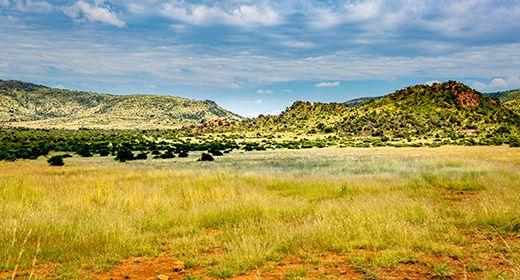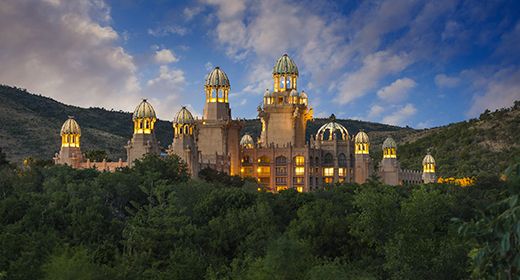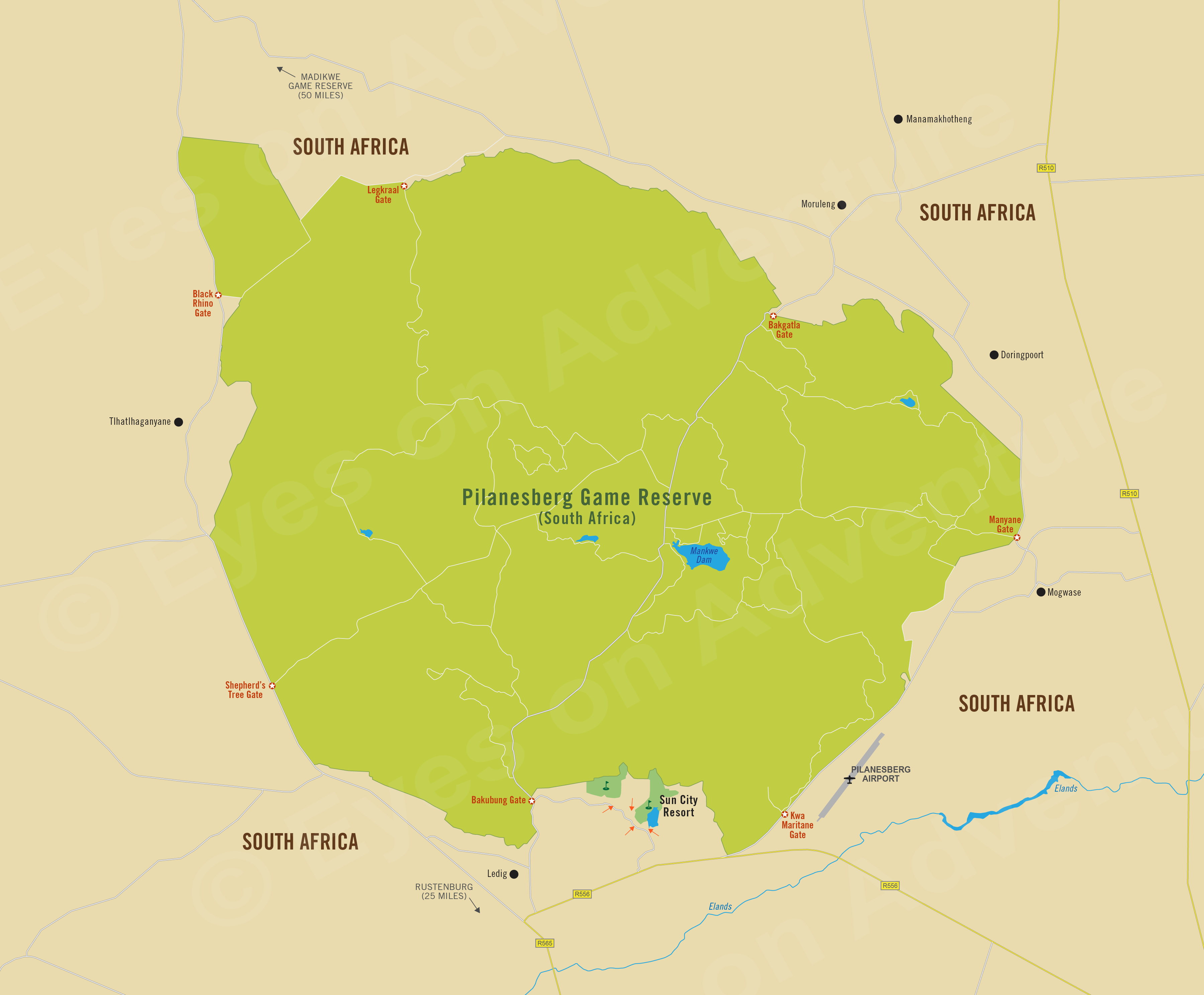Pilanesberg & Sun City
(incl. Pilanesberg Game Reserve, Sun City Resort)
Region Links: Cape Peninsula, Cape Town, Cape West Coast, Cape Winelands, Eastern Cape, Garden Route, Gauteng Province, Johannesburg, Kruger Park & Lowveld, Kruger Private Reserves, KwaZulu-Natal, Madikwe, Overberg & Whale Coast, Pilanesberg & Sun City, Sabi Sand Reserve
Highlights
- Visit Pilanesburg Game Reserve set in a gigantic volcanic caldera
- See all of Africa's Big Five animals and a huge diversity of wildlife
- Golf, gamble and ride the waves at the legendary Sun City Resort
- Stay at the Palace Hotel in Sun City's incredible Lost City
EOA Recommends: Palace of the Lost City, Shepherd's Tree Game Lodge, Tshukudu Bush Lodge
Pilanesberg Game Reserve and the Sun City Resort are both located within the collapsed remains (caldera) of a massive, long-extinct volcano. All of Africa's Big Five animals can be seen in Pilanesberg and the reserve is malaria-free. Sun City offers a casino, four hotels and a huge waterpark.
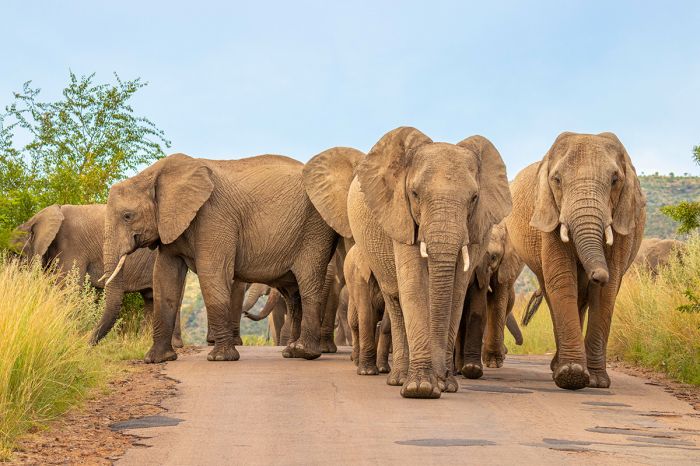
Elephants in Pilanesberg Game Reserve
Pilanesberg can be reached from Johannesburg by road in 2½-3 hours and safaris can be done on a self-drive basis, as guided game drives, or on a full-board basis by staying at one of the safari lodges in the reserve. Guests staying at Sun City may also book game drives in the reserve.
Sun City is a huge hotel and entertainment resort complex created by Sol Kerzner, who also built the legendary Atlantis resorts in both the Caribbean and Dubai. The resort offers a casino, two Gary Player-designed golf courses, four hotels with varying degrees of luxury, and the Valley of Waves (a man-made beach and body-surfing water park).
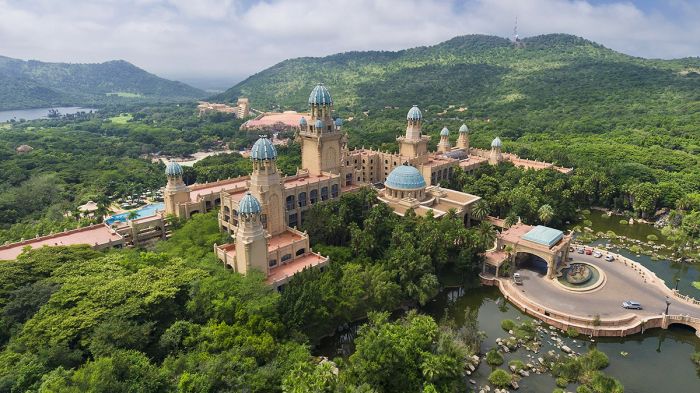
The Palace of the Lost City and Pilanesberg in the distance
More...
Elephants, History, Pilanesberg Game Reserve, Sun City
History
Pilanesberg is in fact entirely contained within the collapsed crater (caldera) of a massive and long-extinct volcano. The volcano, which last erupted 1.2 billion years ago, is thought to have been the highest peak in all of Africa at that time.
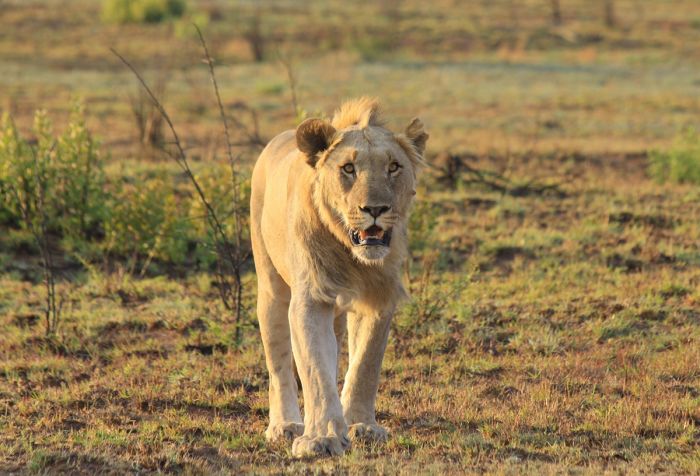
Male lion in Pilanesberg Game Reserve
The northern portion of Pilanesberg was traditionally the land of the native Bakgathla tribe while the southern section was owned by a number of Boer famers, sold and registered to them by the then Transvaal government in the 1860s. Under Apartheid policies, these farms were purchased back by the government during the 1960s and the Bakubung tribe was moved onto this land.
In 1977, South Africa's apartheid regime declared various regions in the north of the country be nominally independent "Bantustans" (or Homelands), specifically to segregate black South Africans from whites. Homelands in South Africa (and also in Namibia, which was then called South West Africa) meant that the black inhabitants were stripped of their South African citizenship and made citizens of their designated homeland.
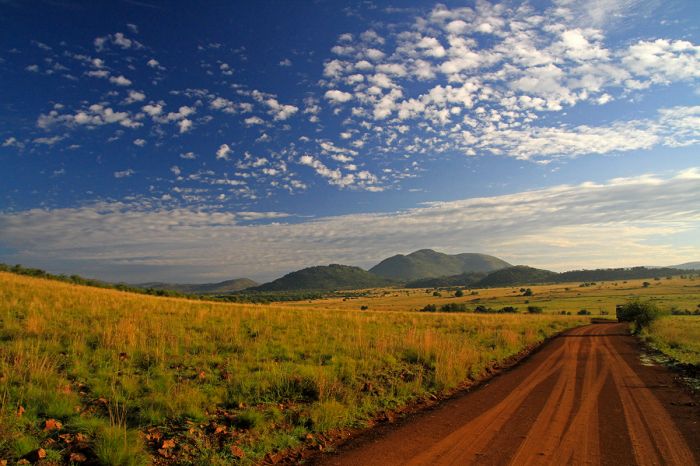
Landscape in Pilanesberg
Much of the land that is today the North West province (and including Pilanesberg) was part of one such homeland called Bophuthatswana. This homeland, and several others, were granted partial autonomy by the government, but they were not recognized outside of South Africa.
In the late 1970s, Lucas Mangope, the leader of Bantustan of Bophuthatswana, decided to create a game reserve on the Pilanesberg land. The Bakgatla chief, who was called Pilane, agreed to include his tribe's northern land into the reserve and the newly created park was named in his honor.
Families were relocated outside the new reserve boundaries and most of the buildings, including a mission church, were demolished. The southern land, which was inhabited by the Bakubung tribe, was also negotiated for incorporation into the park.
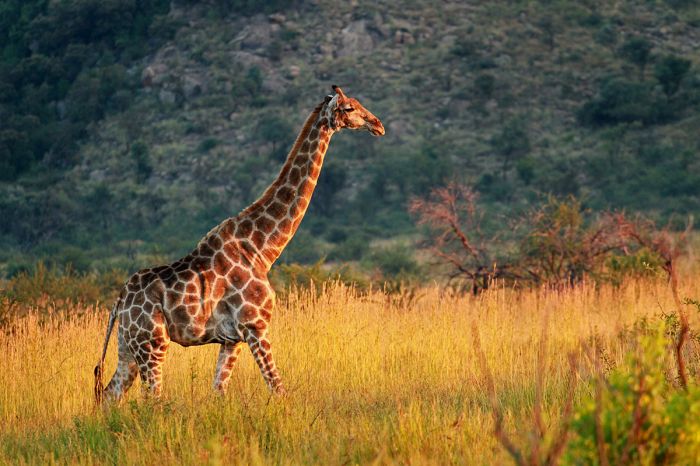
Giraffe in the Pilanesberg Game Reserve
In 1976, Sun International expressed its interest in developing a massive hotel and casino in the area near Mankwe Dam, specifically due to the abundance of fresh water. They were denied due to environmental concerns. Subsequently, Sun obtained a 99-year lease over Doornhoek, the adjacent farm to the south of the reserve, and built the Sun City resort complex there.
In 1979, Pilanesberg National Park was officially established with an area of 221 square miles (572 sq kms). An administrative organization called Operation Genesis was formed with the goal of removing all homes and people, fencing the newly created reserve, removing exotic plants and replanting indigenous ones, and reintroducing some 6 000 indigenous animals, including 19 different species.
Throughout the 1980s, Operation Genesis continued, but the process was long and wrought with many setbacks (see the section below on Elephant Delinquency). Animals to be reintroduced were kept in a 10-sq-km quarantine area and after a few weeks, were released into the greater park. No lion or cheetah were originally brought in, as the prey species needed time to thrive without heavy predation. Leopards were naturally present already, as were brown hyena and mountain reedbuck.
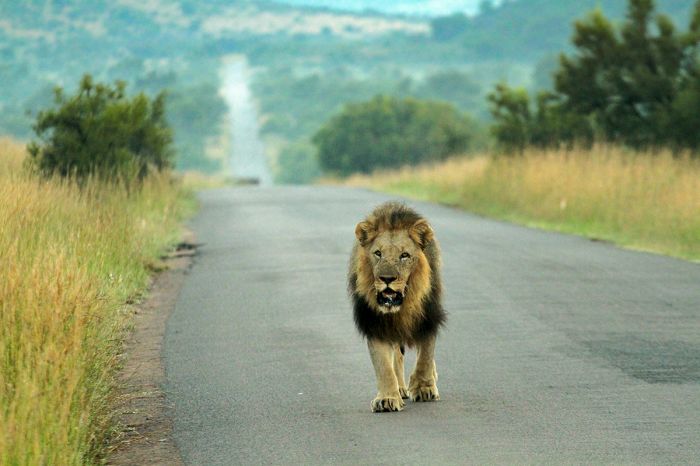
Male lion walking a road in Pilanesberg
All the African Big Five (lion, leopard, elephant, buffalo, rhino) except for lion were part of the reintroduction. Lions were eventually reintroduced in 1993 and by 1994, there were 19 lions in the park. In 1999, African wild dogs were reintroduced.
All of the Bantustans were abolished with the end of apartheid and they were officially reincorporated into South Africa in 1994. At this time, Pilanesberg National Park became Pilanesberg Game Reserve, as it is managed by the North West Parks and Tourism Board and not by South African National Parks (SANParks) .
There are plans (slowly developing) to create a corridor linking Pilanesberg to the Madikwe Game Reserve.
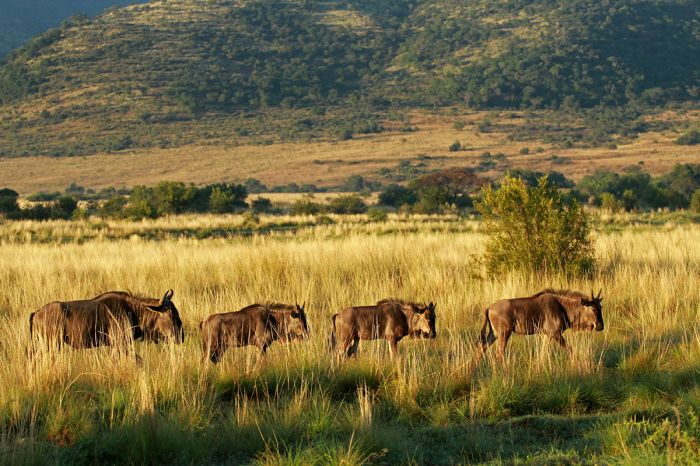
Wildebeests in Pilanesberg
Pilanesberg's Elephant Delinquency
During in the early 1980s, South Africa's Kruger National Park determined that they needed to reduce the number of elephants in the park. Translocating full-grown elephants was beyond the means of technology and park resources, so the plan was to cull a significant number of the adult elephants, while sparing the babies and juveniles.
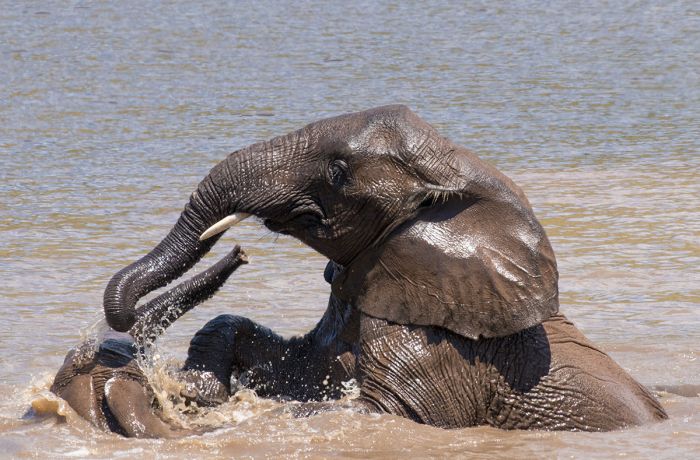
Elephants enjoying some playtime in Mankwe Dam, Pilanesberg Game Reserve
The spared youngsters were relocated to other reserves in South Africa, as well as American and European zoos. Pilanesberg was happy to accept some of the young survivors of the Kruger culling, in addition to a significant number of Kruger's rhinos (both black and white species).
Some years later, in 1993, the park rangers in Pilanesberg began to see numerous carcasses of its rhinos that strangely appeared to have been mutilated prior to dying. Poaching was initially suspected, but the rhino horns had not been taken, so this was ruled out. The situation became dire, with many more rhinos dying with the same strange wounds seen on all bodies discovered. Hidden cameras were placed and some of the rhinos were collared and tracked to try and discover the 'culprits'.
Eventually they discovered that a small group of teenaged bull elephants was harassing and killing the rhinos. This was a heretofore unseen behavior for elephants. It was found that all of the offending elephants were young bulls between the ages of 13 and 18 and in the naturally occurring state of heightened sexuality called musth.
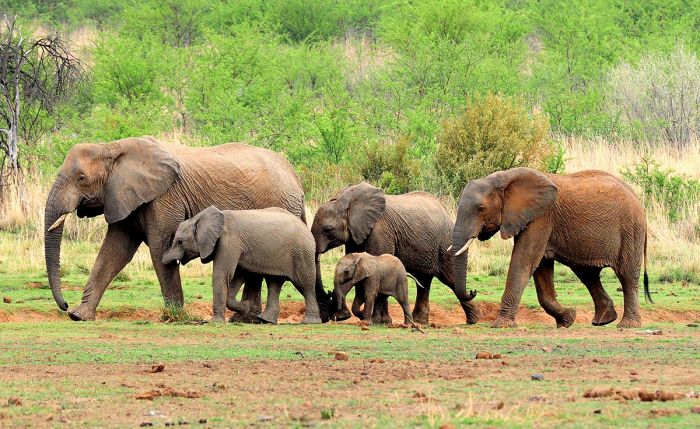
An elephant family in Pilanesberg
Musth bulls become aggressive with each other and anything else that they may encounter. Other elephant bulls of the same age and size that are not in musth will typically give way to a bull in musth to avoid their aggression.
Normally bulls in a given area stagger their periods of musth, which may mean that each has a better chance of mating and to reduce conflict between mature males. In this case, all of these teenage Pilanesberg bulls were simultaneously in musth and ten years prematurely compared to 'normal' wild elephant society. The authorities were baffled.
The young males in musth were constantly rebuffed by the female elephants in the park and so they turned their aggression on the rhinos and were active trying to mount the next largest animals they could find.
Although young by elephant standards, bulls of this age are still large compared to any other animals living in the park had there were no elephants of an older age. Two of the bulls seemed to be the 'gang leaders' and the ones responsible for much of the rhino killings. Park authorities named them Tom Thumb and Maphuto. They were both kept under surveillance.
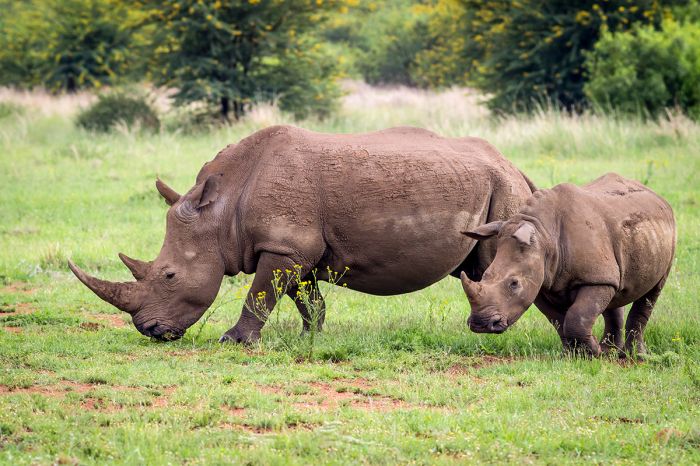
White rhinos in Pilanesberg Game Reserve
It was discovered that Tom Thumb had breached the Pilanesberg fences and was actively recruiting more young bulls to his gang from outside the park. This behavior was unprecedented and a big shock to the researchers following this drama. Such deliberate gang-like coordination had never been witnessed.
The authorities had to act or their rhinos could all be lost, so they decided to kill all members of this troublesome gang of bulls, including both Tom Thumb and Maphuto.
A professional hunter was brought in to do the job, but Tom Thumb somehow sensed he was being hunted and managed to sneak up on the hunter and kill him before he even got off a shot.
More hunters were brought in and they managed to shoot most of the bulls, including Maphuto, but Tom Thumb again escaped. Maphuto's sister stood guard over him and refused to leave him even after his death. Tom Thumb was allowed to live, but soon after, a new gang of young bulls formed and it also started killing rhinos in the same manner, effectively replacing the offending elephants that had been shot.
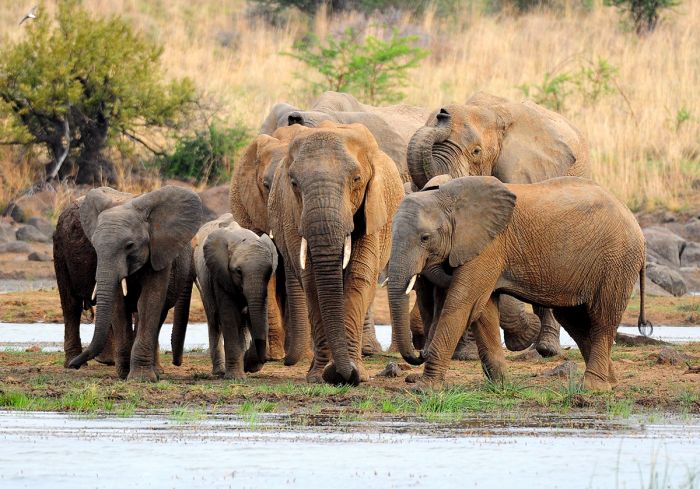
An elephant family in Pilanesberg
As of the mid 1990s, almost 10% of the park's rhinos had been killed by elephants. Now fifteen years after the Kruger culling and with better technology for moving full-grown elephants, park authorities decided to something new. They introduced several large, adult bull elephants (and adult females) from Kruger National Park. All of the elephants introduced were in their mid to late 40's. They wanted to see what the delinquent teenaged bulls would do when older mature elephants were present.
In a naturally occurring wild elephant society, the older animals are followed by the younger animals, who essentially learn how to be an elephant from them. Also, even though teenage bulls do enter musth, when there are larger and much stronger adult bulls present, the younger bulls cannot successfully harass or fight these older bulls, so their musth period does not last long.
The biggest of the introduced bulls was called Amarula. Pilanesberg's much younger bulls had not seen such a bull since they were babies, so one of them decided to approach Amarula and have a go at the much bigger bull.
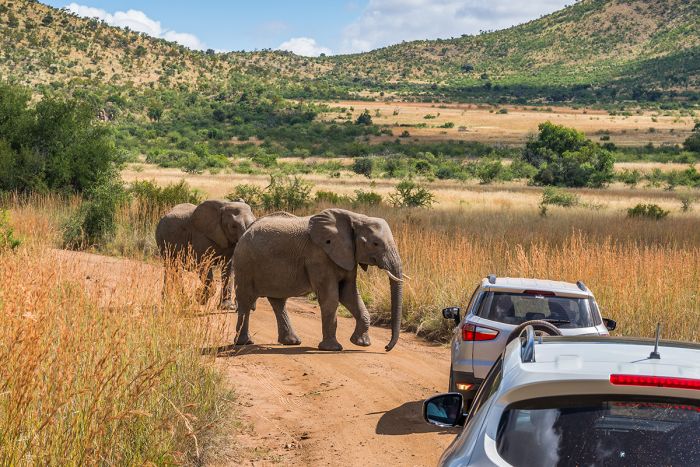
Elephants and visitors on game drive in Pilanesberg
Amarula hit the younger teenage bull so hard that it was seen to leave its feet entirely and fly several feet up into the air. The other young bulls witnessing this took notice that musth or no musth, they were no match for this impressive male.
The rhino killing literally stopped at once.
The experiment to introduce mature elephants to the park had worked. Almost immediately all of the young males left their musth phase due to the presence of the new large bulls present in the park. The experiment provided a significant finding for elephant research in that adult males are required to keep the juvenile bulls in check.
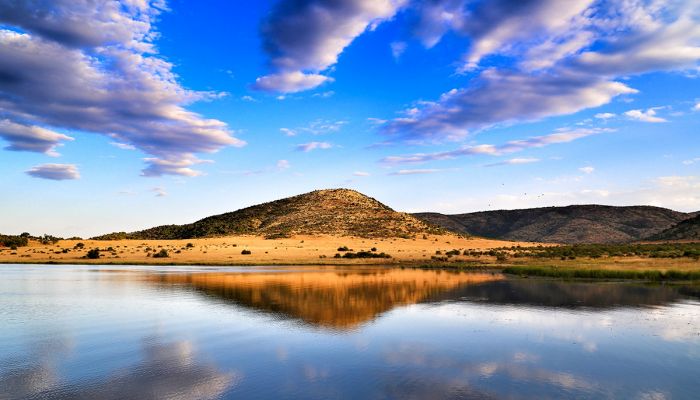
Mankewe Dam in Pilanesberg
In 2001 the same rhino-killing story occurred in South Africa's Hluhluwe-Umfolozi National Park, which had also received numerous young elephants spared in the Kruger culling. A total of 58 rhinos (both black and white species) were killed by rogue teenaged bull elephants. The park immediately introduced a group of ten adult bulls and this solved their problem as well.
South Africa has had a moratorium on culling elephants since 1995 and today, moving entire family groups is standard practice for elephant relocations.
Pilanesberg Game Reserve
Contained within a massive volcanic caldera, the malaria-free Pilanesberg Game Reserve offers game viewing in one of three ways: as a self-driver, on a guided game drive as part of a pre-booked safari tour (or while staying at Sun City), or by staying inside the park at one of its safari lodges.
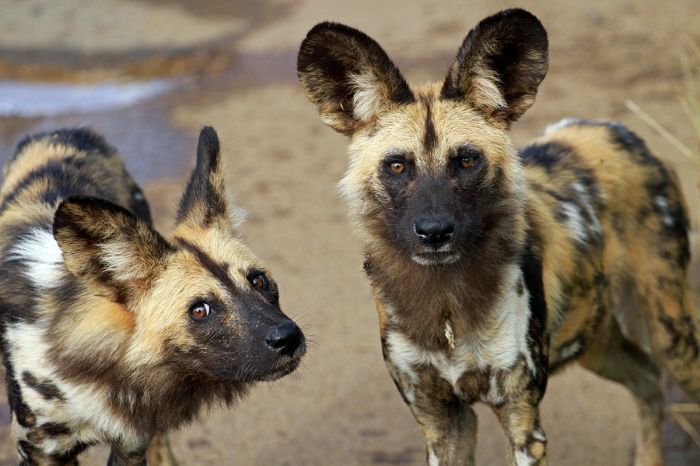
African wild dogs in the Pilanesberg
We highly recommend staying at one of the safari camps to get the best safari experience and avoid the self-drivers that generally stay on the main tarred roads.
Pilanesberg has an enormous diversity of species, including Africa's Big Five animals (lion, leopard, rhino, elephant, buffalo), as well as cheetah, African wild dog, brown hyena, caracal, serval, and jackal. The only notable predator missing is the spotted hyena, which was not introduced in order to keep predation in check and to reduce pressure on the park's cheetahs and leopards.
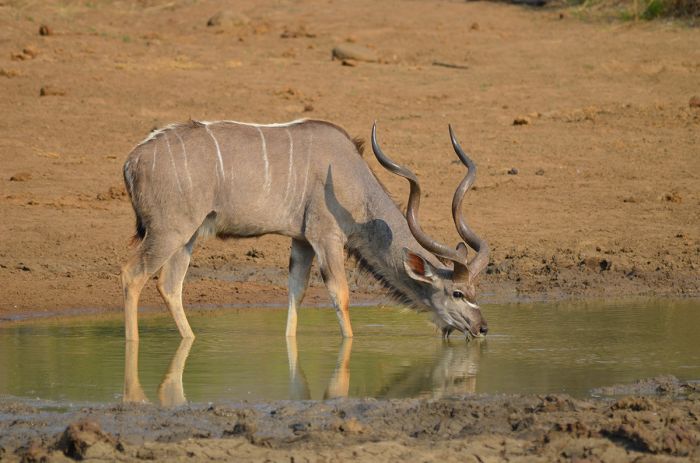
Kudu bull drinking in Pilanesberg
Herbivores are also well represented, with giraffe, oryx, sable, eland, tsessebe, springbok, impala, bushbuck, mountain reedbuck, greater kudu, waterbuck, hartebeest, and warthog. Wildebeest and zebra are particularly abundant. There are hippo and crocodile in Mankwe Dam. The reserve is one of the best places in Africa to see both black and white rhino species. Bird watching in Pilanesberg is also superb.
The Sun City resort and entertainment complex is located just outside the southern edge of the reserve.
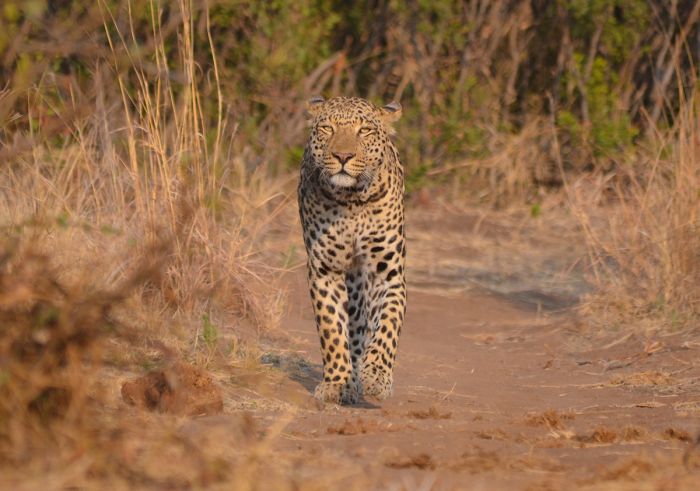
Leopard in Pilanesberg
Sun City
Sun International's Sun City Resort is a huge hotel, golf, and casino complex located on the southern edge of the Pilanesberg Game Reserve. The resort was developed in 1979 by the legendary South African hotel magnate Sol Kerzner, who founded the country's largest hotel groups (Southern Sun Hotel Group and Sun International) and also developed the renowned Atlantis resorts in Dubai and the Caribbean.
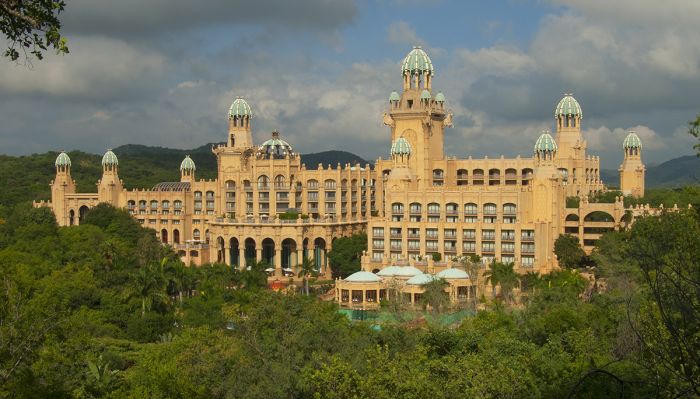
The Palace of the Lost City Hotel at Sun City
The complex includes two Gary Player-designed world-class golf courses, the Gary Player Country Club and the Lost City Golf Course.
At the time of its construction, the Pilanesberg and Sun City land was a part of the independent Bantustan of Bophuthatswana (see History section above) and was thus exempted from South Africa's strict anti-gambling laws, so the casino was permitted. When Apartheid ended and the region was again incorporated back into South Africa, the casino was allowed to continue.
Sun City includes four luxury hotels with a total of 1 200 rooms, including the ultra-lavish Palace of the Lost City Hotel. The casino offers slot machines, roulette wheels, and card tables.
The incredible Valley of Waves is a man-made beach and water sports venue complete with a body surfing wave area.
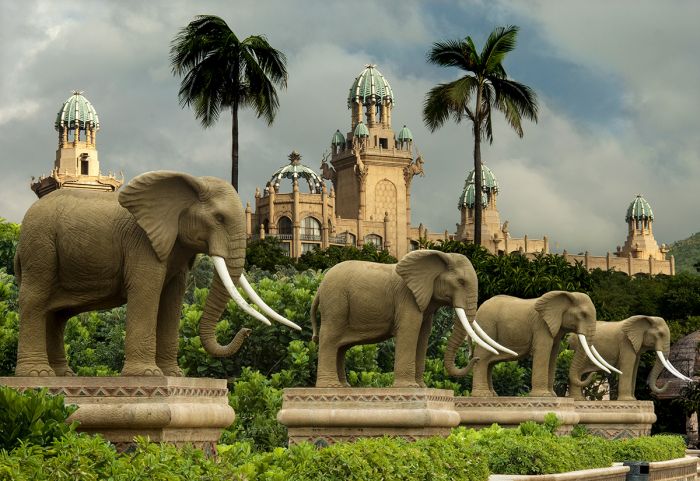
The Lost City at Sun City
More...
Great Good Fair Poor
- Jan
- Feb
- Mar
- Apr
- May
- Jun
- Jul
- Aug
- Sep
- Oct
- Nov
- Dec
Summers in Pilanesberg (November thru March) average high temperatures of around 78°F (25°C), with rains that falling as late afternoon thunderstorms or early evening showers.
Most of the annual rain falls during the summer months. Days are typically pleasant, sunny and warm, with high temps usually below 86°F (30°C). The nights temperatures are comfortable and cool, falling to around 57°F (14°C).
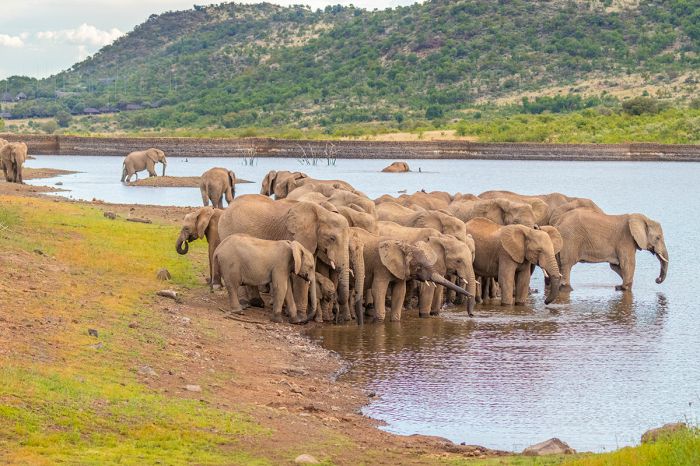
Elephants drinking in Pilanesberg Game Reserve
The winter months (May thru August) are much cooler and rainfall is unusual. Daytime temperatures are comfortable and average 65°F (18°C). Overnight temperatures can become quite chilly, occasionally falling to near freezing. June and July are the coldest months.
Game viewing in Pilanesberg is good all year. The dry winter months mean ground water becomes scarce and wildlife will tend to congregate and spend more time near the permanent water sources, making for better game viewing during the winter.
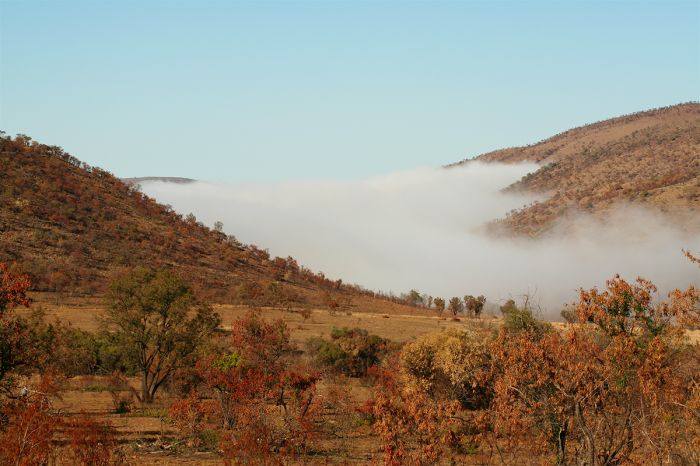
Fog rolling over the hills in Pilanesberg




